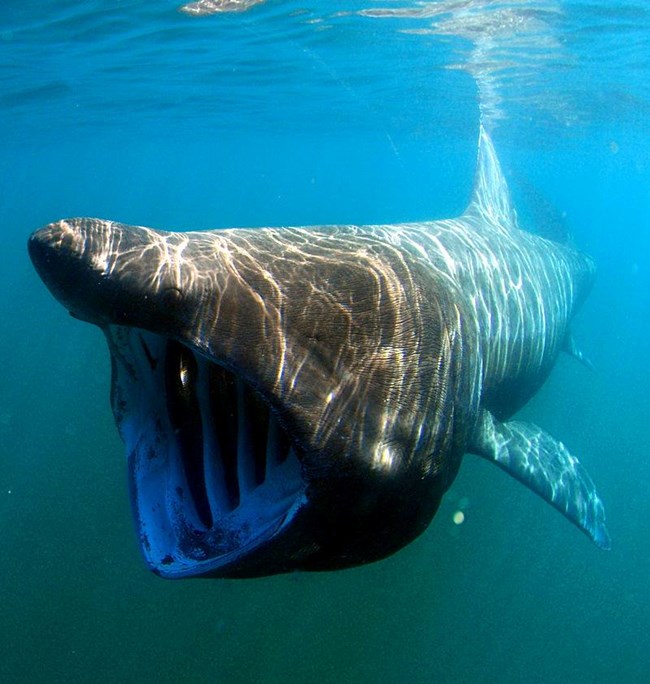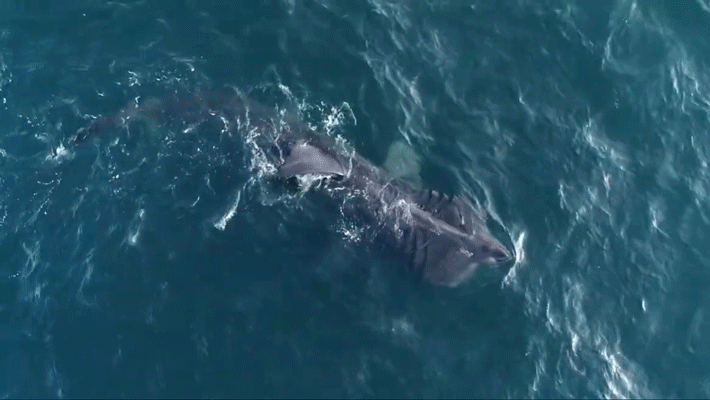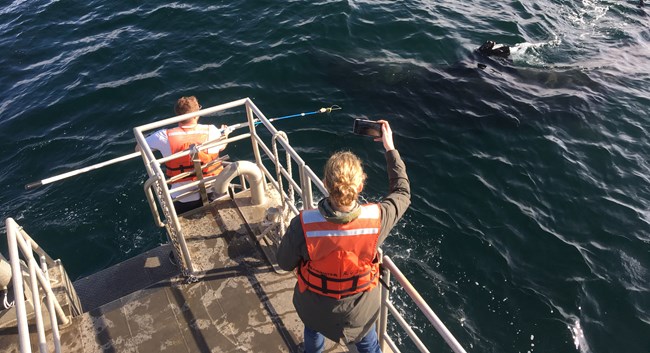Last updated: December 6, 2019
Article
Basking Sharks Sighted In Santa Barbara Channel

NOAA / Greg Skomal
Fall 2019 - For people along the southern California coast, basking sharks can be tons of fun to spot. Up to 16 tons, in fact! They are the second largest fish in the sea after the whale shark, and can grow to rival the length of a school bus. At first glance they resemble skittish, predatory great white sharks, yet basking sharks are actually gentle, approachable filter feeders. Unafraid of boats, they may be seen on a calm day seeming to bask near the surface, swimming slowly with their enormous mouths wide open, dining on tiny zooplankton in the water. That is, if there are any to be seen.
Once common in schools of hundreds or thousands, basking sharks were heavily fished for fishmeal and oil in the US until the 1950’s, and targeted for eradication in Canada until the 1970’s. Catching basking sharks has been prohibited along the West Coast for many years now, but there have been few signs of recovery. The National Oceanic and Atmospheric Administration (NOAA) is working to change that. However, faced with a serious lack of information about basking sharks’ lives, NOAA has struggled to know what is going wrong and what to do to help.

Kristin Campbell / Newport Coastal Adventure
Thus, since 2009 NOAA has been actively trying to find and study basking sharks. They managed to find and tag four individuals in 2010-2011. Then, they found no others they could tag...until this year! No one is quite sure why, but last spring there were a slew of basking shark sightings in the Santa Barbara Channel. For example, Channel Islands National Park staff saw a school of 21(!) basking sharks in early May. Could these sightings indicate a recovery? It is too soon to tell. Either way, persisting in their efforts to find more study subjects, NOAA researchers were able to successfully satellite tag two more basking sharks!

NOAA/ Pike Spector
The tags record the sharks’ movements, and collect temperature, depth, and sunlight data to help NOAA understand where basking sharks go, and what kinds of habitats they use. NOAA is also collecting sighting information from individuals who spot basking sharks to get a better handle on their movements and abundance. What NOAA learns from these efforts will help them piece together a picture of the challenges the sharks are facing. From there, they’ll be better able to take action to help basking sharks thrive once again in the eastern Pacific. A thriving population would both support a healthier ocean ecosystem, and elicit “ooohs” and “ahhhs” from people along the southern California coast generations to come.
Science by the Sea newsletter article by the Mediterranean Coast Inventory and Monitoring Network.
